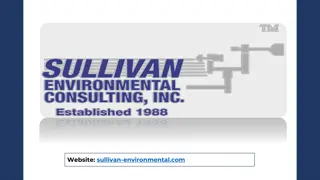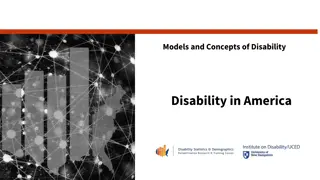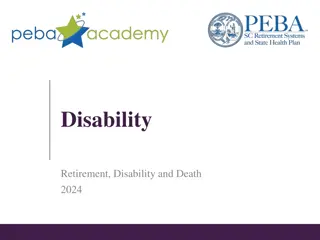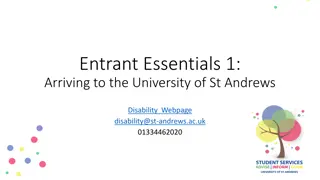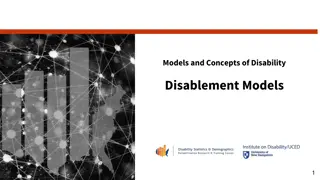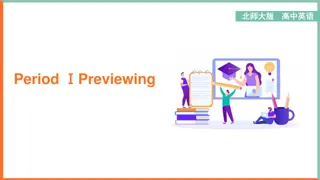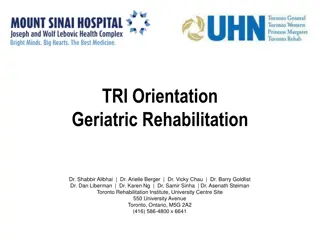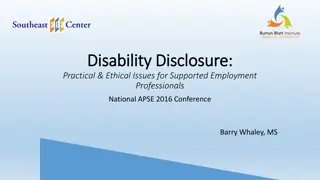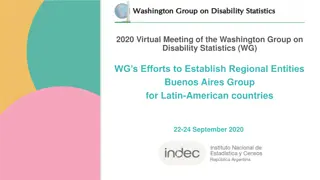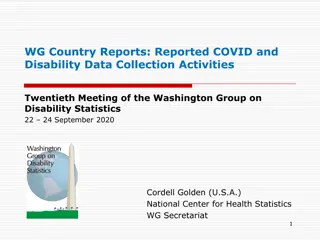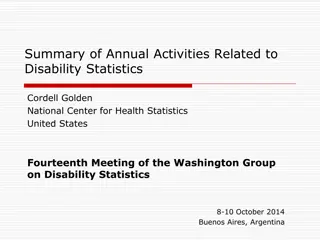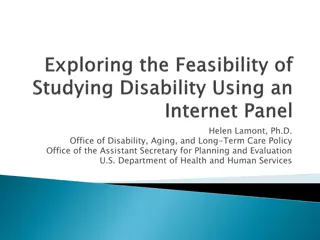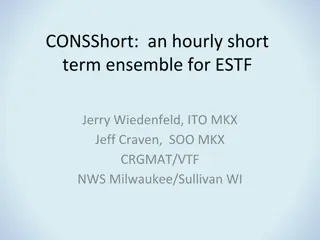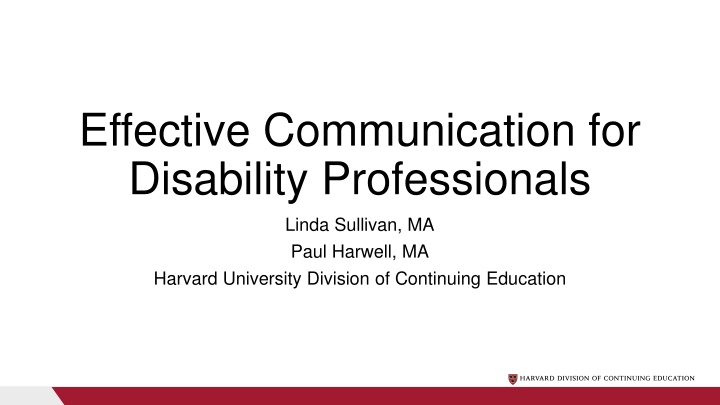
Effective Communication Tips for Disability Professionals
Learn about effective communication principles, styles, and strategies for professionals working with individuals with disabilities. Explore the importance of clear communication and its impact on fostering positive relationships and better outcomes in disability services.
Download Presentation

Please find below an Image/Link to download the presentation.
The content on the website is provided AS IS for your information and personal use only. It may not be sold, licensed, or shared on other websites without obtaining consent from the author. If you encounter any issues during the download, it is possible that the publisher has removed the file from their server.
You are allowed to download the files provided on this website for personal or commercial use, subject to the condition that they are used lawfully. All files are the property of their respective owners.
The content on the website is provided AS IS for your information and personal use only. It may not be sold, licensed, or shared on other websites without obtaining consent from the author.
E N D
Presentation Transcript
Effective Communication for Disability Professionals Linda Sullivan, MA Paul Harwell, MA Harvard University Division of Continuing Education
Purpose and Objectives Most of our work hinges on communication, but how often do we reflect on how we communicate or how effectively we communicate? Objectives: Learn about the principles of effective communication (Grice s Maxims) Learn about communication style, and how it influences your work with students and campus community Learn about communication under pressure Sullivan & Harwell AHEAD 2019 Do not copy without permission 2
Communication by definition Communication: 1. a process by which information is exchanged between individuals through a common system of symbols, sings, or behavior, also exchange of information 2. personal rapport Merriam-Webster Effective: 1. producing a decided, decisive, or desired effect Merriam-Webster Effective Communication: Successful delivery of intended message wherein all parties assign similar meanings. Sullivan & Harwell AHEAD 2019 Do not copy without permission 3
Regulated Communication Informal, practical understanding of communication Legally defined communication Section 504 104.44 ADA Title II ADA Title III IDEA DCL Interactive process Sullivan & Harwell AHEAD 2019 Do not copy without permission 4
Group Activity Sullivan & Harwell AHEAD 2019 Do not copy without permission 5
Grices Maxims of Communication Quality Relevance Quantity Manner 6 Sullivan & Harwell AHEAD 2019 Do not copy without permission
Processes of Communication What you say What they hear Intent Impact Sullivan & Harwell AHEAD 2019 Do not copy without permission 7
Processes of Communication What you mean say What they interpret Intent Impact Sullivan & Harwell AHEAD 2019 Do not copy without permission 8
Communication Under Pressure Influenced by existing relationships Build in advance; know role and scope Perceptions vs reality not necessarily factual Counter with clear goals and expectations Open-mindedness listen, observe, and ask critical questions Know your audience linear vs spatial thinkers Be concise Short, simple sentences and words Control the situation Respond, don t react Sullivan & Harwell AHEAD 2019 Do not copy without permission 9
Basic guide to critical questions LISTEN!! Do ask reflective questions (empower) Don t ask leading questions (overpower) Avoid focus on why questions and move to problem solving Identify facts, goals, solutions, and concrete actions to resolve Check your perception, clarify what you hear, avoid being condescending 10 Sullivan & Harwell AHEAD 2019 Do not copy without permission
Be the thermostat, not the thermometer Sullivan & Harwell AHEAD 2019 Do not copy without permission 11
Practical Take Urgency Emergency Consider intent AND impact Keep it simple and concise Avoid professional jargon Create mass communication to an 8th grade level (Readability in Word) Ask questions, leave space for answers Listen carefully, check your perception/understanding Control the temperature Model the behavior you expect Sullivan & Harwell AHEAD 2019 Do not copy without permission 12
Discussion Thank you for joining us! Please complete your survey. Sullivan & Harwell AHEAD 2019 Do not copy without permission 13


